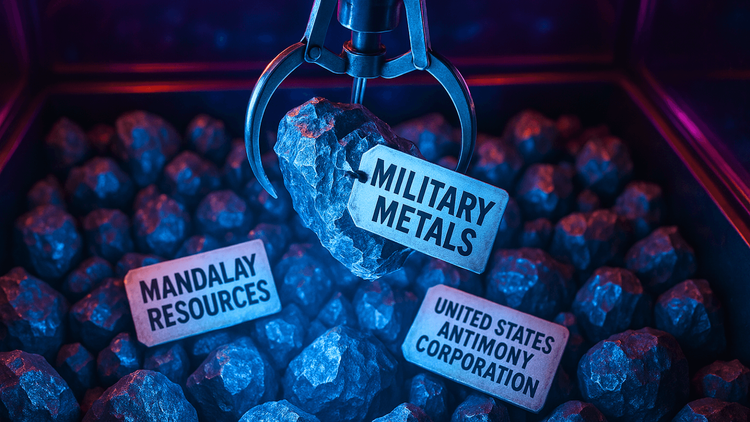The Dawn of Advanced Nuclear Technology in the US
Breaking Ground: The Future of Nuclear Energy Begins with Hermes

The United States has embarked on a groundbreaking journey with the commencement of site work and excavation for the Hermes Low-Power Demonstration Reactor. Announced by Kairos Power, this project marks the beginning of the first non-light-water reactor permitted in the USA in over 50 years. As a pioneering step in nuclear technology, Hermes represents a significant milestone in the advancement of Gen IV reactors.
The Genesis of Hermes
Kairos Power, a company at the forefront of nuclear innovation, is driving this project with its cutting-edge fluoride salt-cooled high-temperature reactor technology, the KP-HFR. The Hermes reactor is a non-power version of this technology and serves as the first and only Gen IV reactor approved for construction by the US Nuclear Regulatory Commission (NRC). Set to be operational by 2027, Hermes is not just a technological marvel but a critical step towards commercializing advanced reactor technology.
Site Work and Excavation
The commencement of site work and excavation for the Hermes reactor is a momentous occasion. Kairos Power has contracted with the heavy-civil construction company Barnard Construction Company, Inc to carry out the work at the Hermes site in Oak Ridge, Tennessee. This partnership is crucial in ensuring the project progresses smoothly and meets its operational target.
Hermes Reactor Specifications
The Hermes reactor is a unique and sophisticated piece of technology. Unlike traditional light-water reactors, it utilizes a fluoride salt-cooled high-temperature reactor design, which offers numerous advantages in terms of efficiency and safety. This innovative approach sets Hermes apart and positions it as a game-changer in the nuclear industry.
Regulatory Approval
In December, the NRC issued a construction permit for Hermes, a significant achievement that underscores the reactor's importance in the nuclear sector. This permit is a testament to the rigorous standards met by Kairos Power and highlights the potential of Hermes to revolutionize nuclear technology.
Modular Construction Approach
One of the standout features of the Hermes project is its modular construction technique. This approach involves fabricating reactor modules in Kairos Power's facility in Albuquerque, New Mexico, and shipping them to Oak Ridge for assembly. Modular construction offers numerous benefits, including reduced construction time, lower costs, and enhanced quality control, making it a pivotal aspect of the Hermes project.
Partnerships and Collaborations
The success of the Hermes project is bolstered by partnerships with several esteemed institutions. Key partners include Oak Ridge National Laboratory, Idaho National Laboratory, EPRI, and Materion Corporation. These collaborations bring together a wealth of expertise and resources, driving the project forward and ensuring its success.
Engineering Test Unit (ETU 3.0)
Integral to the Hermes project is the Engineering Test Unit (ETU 3.0), a non-nuclear demonstration facility co-located with Hermes. ETU 3.0 will generate valuable supply chain, construction, and operational experience, seamlessly integrating with the Hermes project and providing critical insights for future developments.
Kairos Power's Strategic Vision
Mike Laufer, CEO and co-founder of Kairos Power, has emphasized the pivotal nature of the Hermes project. He views it as a crucial step towards deploying advanced reactor technology and delivering cost certainty to customers. The lessons learned from Hermes will be invaluable, driving continued innovation and progress for Kairos Power.
TRISO Pebble Fuel Production
A key element of the Hermes reactor is the TRISO pebble fuel, produced in collaboration with Los Alamos National Laboratory. This fuel is integral to the reactor's operation, offering superior safety and performance characteristics, and further cementing Hermes' status as a groundbreaking project.
Hermes 2 Test Reactor
Looking ahead, Kairos Power has ambitious plans for the Hermes 2 test reactor. This future iteration will be an electricity-generating reactor, featuring two 35 MWt units similar to the Hermes plant. The NRC's recent completion of its final safety evaluation for the Hermes 2 construction application marks a significant milestone, paving the way for this next phase.
Impact on Nuclear Energy Industry
The Hermes project has the potential to transform the nuclear energy industry. Its innovative design and construction techniques could set new standards, making nuclear power more accessible, efficient, and cost-effective. This transformation could have far-reaching implications for the US energy landscape, promoting sustainable and reliable power generation.
Environmental and Economic Benefits
The Hermes reactor promises numerous environmental and economic benefits. Its advanced technology and design offer enhanced safety and efficiency, reducing the environmental impact of nuclear power. Economically, the project is expected to generate significant local and national benefits, creating jobs and stimulating economic growth.
Challenges and Opportunities
While the Hermes project presents numerous opportunities, it also comes with challenges. Ensuring seamless integration of modular construction techniques, managing partnerships, and adhering to regulatory standards are some of the hurdles Kairos Power must navigate. However, these challenges also present opportunities for innovation and growth, driving the project forward.
Conclusion
The commencement of site work for the Hermes Low-Power Demonstration Reactor marks a significant milestone in the advancement of nuclear technology. As the first Gen IV reactor approved for construction in the USA in over 50 years, Hermes represents a bold step towards the future of nuclear power. With its innovative design, strategic partnerships, and ambitious vision, Kairos Power is poised to revolutionize the nuclear energy landscape, setting new standards for safety, efficiency, and cost-effectiveness.






